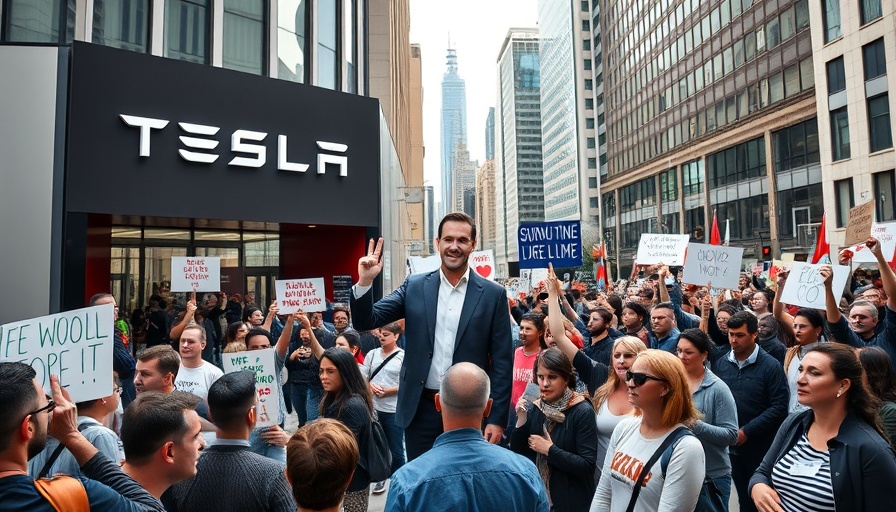
Global Protests Against Tesla: What You Need to Know
On March 29, 2025, activists organized the much-anticipated 'Tesla Takedown,' where crowds gathered worldwide outside Tesla showrooms, dealers, and charging stations. These protests, while publicized as peaceful, have drawn lines between various factions, leading to fears of escalating tensions.
The Growing Divisions: Activists vs. Authorities
In recent months, protests aimed at challenging Tesla's practices, particularly under CEO Elon Musk's leadership, have intensified. While organizers promote nonviolent resistance, there's a noticeable increase in aggressive rhetoric from officials. President Donald Trump has labeled these protests as 'domestic terrorism,' and the potential for a government crackdown looms large. Such labeling threatens to conflate peaceful demonstrations with escalating violence, painting activists in a harsh light.
Understanding the Tesla Takedown Movement
The key goal of the 'Tesla Takedown' initiative is to negatively impact Elon Musk’s financial influence by urging supporters to divest from Tesla. Natasha Purdum, a New Jersey-based organizer, has stated that their objective is to hit Musk where it counts: his substantial wealth tied up in Tesla stocks. This strategy highlights how economic power translates into political influence, showcasing the overlap between corporate actions and societal impacts.
The Risk of Overreach: Civil Rights Under Scrutiny
Experts, including Mike German, a former FBI agent, warn that in efforts to combat terrorism, law enforcement may inadvertently undermine civil rights. By applying counterterrorism measures to protest movements, peaceful activists could be unjustly targeted. With the FBI reportedly monitoring Tesla Takedown protests, there’s an impending risk that the distinction between peaceful protesting and criminal activity could become dangerously blurred.
The Role of Social Media in Shaping Perceptions
Social media has amplified voices on both sides of the protest spectrum. While it serves as a platform for activists to mobilize, it also becomes a tool for spreading narratives that can tarnish movements' reputations. The portrayal of protesters versus the actions of vandals has become entangled, creating a narrative that threatens to drown out legitimate grievances against corporate practices.
Future Implications for Protest Movements
As the Tesla protests unfold, implications extend beyond the electric vehicle industry. Watching how authorities react could reshape the approach to civil engagements across the tech sector and beyond. If these protests mark a shift towards heavier regulation of activism, future mobilizations may be more cautious, fearing criminalization.
Conclusion: The Right to Protest and Its Challenges
The upcoming global day of action calls for a critical examination of the intersection between tech corporations and social activism. As tensions rise, understanding the dynamics at play will enable more informed and constructive dialogues around corporate responsibility and civil rights. The Tesla protests represent a pivotal moment where the balance of power between big tech and grassroots activism hangs in the balance.
 Add Row
Add Row  Add
Add 



Write A Comment